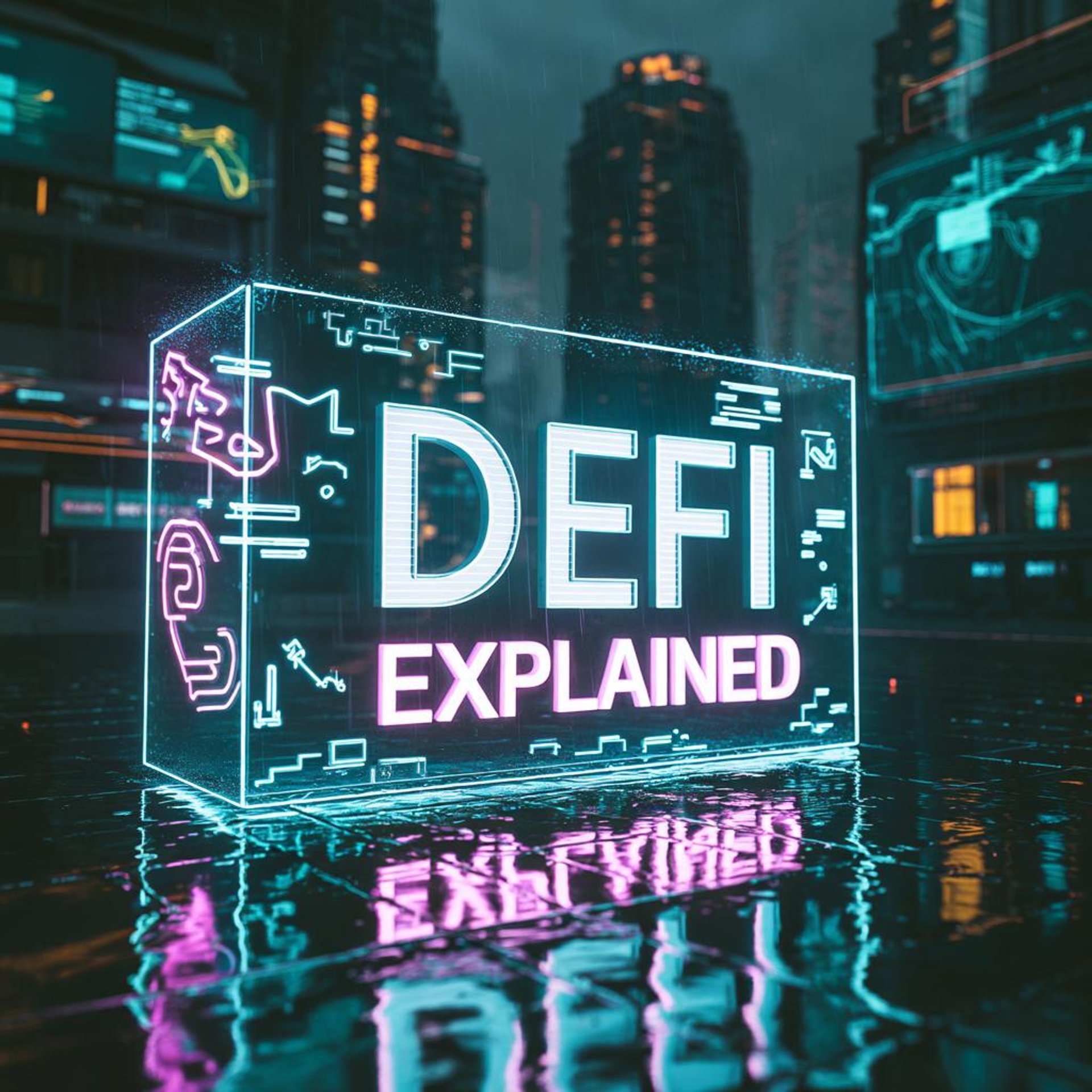

What is DeFi?
DeFi (Decentralized Finance) refers to a blockchain-based financial ecosystem that enables users to access financial services such as lending, borrowing, trading, and investing without relying on traditional intermediaries like banks or brokers. It operates through smart contracts on decentralized networks like Ethereum, Solana, and Binance Smart Chain.
How DeFi Works
DeFi leverages blockchain technology to create transparent, permissionless, and trustless financial systems. Here's an overview of its mechanics:
Core Components of DeFi
Smart Contracts: Self-executing contracts with the terms of the agreement directly written in code. They automate processes like lending, borrowing, and yield farming.
Decentralized Applications (dApps): Front-end interfaces that allow users to interact with DeFi protocols (e.g., Uniswap, Aave, MakerDAO).
Liquidity Pools: Users deposit funds into pools, enabling decentralized trading and lending. In return, they earn fees or interest.
Tokenization: Assets (e.g., real estate, art, or fiat currencies) are tokenized into digital forms that can be traded or used as collateral.
Stablecoins: Cryptocurrencies pegged to fiat currencies (e.g., USDC, DAI) provide stability in volatile markets.
Decentralized Governance: DeFi protocols are often governed by Decentralized Autonomous Organizations (DAOs), where token holders vote on changes to the system.
Key DeFi Services
Lending and Borrowing:
Example: Aave, Compound.
Users can lend their crypto to earn interest or borrow against their deposited assets.
Decentralized Exchanges (DEXs):
Example: Uniswap, PancakeSwap.
Peer-to-peer trading of cryptocurrencies without centralized oversight.
Yield Farming:
Users stake or provide liquidity to earn rewards in the form of additional tokens.
Staking:
Users lock their tokens in a protocol to secure the network or earn rewards.
Asset Management:
Example: Yearn Finance automates the optimization of yield farming strategies.
Insurance:
DeFi platforms like Nexus Mutual offer decentralized insurance against smart contract failures or hacks.
Opportunities to Participate in DeFi
There are several ways to get involved in DeFi:
Lending and Borrowing
Deposit funds into DeFi protocols to earn interest.
Borrow against your crypto assets without selling them, maintaining exposure to potential price increases.
Providing Liquidity
Contribute to liquidity pools on DEXs like Uniswap.
Earn trading fees and, in some cases, additional rewards in the protocol's native token.
Yield Farming
Stake your tokens in yield farming protocols to earn governance tokens or other incentives.
Example: Deposit DAI into Yearn Finance to maximize returns.
Staking
Stake cryptocurrencies on proof-of-stake blockchains or within DeFi protocols to earn rewards.
Example: Stake ETH on Ethereum 2.0 or other tokens in protocols like PancakeSwap.
Buying Governance Tokens
Purchase governance tokens (e.g., UNI, MKR) to participate in protocol decisions and benefit from their potential value appreciation.
Decentralized Insurance
Invest in insurance pools to earn premiums while providing coverage against risks like smart contract exploits.
Opportunities in DeFi
Passive Income
Earn consistent returns through lending, staking, and yield farming.
Financial Inclusion
DeFi removes traditional barriers, enabling anyone with internet access to participate in financial markets.
Transparency and Control
Users retain full control over their funds and transactions, with all operations visible on the blockchain.
Innovation and Access to New Assets
Access innovative financial instruments, tokenized real-world assets, and new markets.
Risks in DeFi
Smart Contract Risks
Bugs or vulnerabilities in smart contracts can lead to exploits and loss of funds.
Market Volatility
Cryptocurrency markets are highly volatile, leading to significant fluctuations in the value of collateral or rewards.
Regulatory Risks
Governments may impose regulations that limit the use of DeFi or specific tokens.
Impermanent Loss
Liquidity providers may suffer a loss compared to simply holding their assets due to price fluctuations.
Rug Pulls and Scams
Developers may abandon or exploit projects, stealing user funds.
Lack of Insurance
Not all protocols offer insurance, leaving users unprotected against hacks or system failures.
DeFi’s Role in IoT, Web3, and Web4
In the Internet of Things (IoT)
DeFi provides the financial backbone for machine-to-machine (M2M) transactions in IoT networks:
M2M Payments: IoT devices can use cryptocurrencies to autonomously pay for services (e.g., an electric car paying a charging station).
Data Monetization: IoT devices can sell data securely using DeFi protocols.
Decentralized Energy Markets: Smart grids can use DeFi to tokenize energy and facilitate peer-to-peer energy trading.
In Web3
DeFi is a cornerstone of Web3, enabling decentralized ownership and financial autonomy:
Decentralized Governance: DeFi protocols like DAOs give Web3 users control over financial systems.
Tokenized Assets: DeFi allows tokenization of real-world assets, creating new opportunities for Web3 economies.
Interoperability: DeFi protocols ensure smooth asset transfers across different Web3 platforms using cross-chain bridges.
Towards Web4
DeFi will play a critical role in the human-machine symbiosis envisioned in Web4:
Autonomous Financial Systems: AI-powered IoT devices will use DeFi to manage their finances (e.g., paying for maintenance, leasing, or upgrades).
Integrated Identity and Data Economy: Blockchain-based identity systems in Web4 will use DeFi for secure, user-owned data monetization.
AI-Driven Investments: AI agents in Web4 could autonomously invest in DeFi protocols, optimizing returns for users.
Conclusion
DeFi is revolutionizing finance by removing intermediaries, increasing transparency, and creating new opportunities for individuals and machines to interact financially. It plays a central role in Web3 as a decentralized infrastructure and will continue to evolve as a key enabler of Web4, where IoT devices and AI systems will autonomously transact and interact in a decentralized, symbiotic ecosystem. However, while the opportunities are vast, participants must remain cautious and informed about the risks involved.

